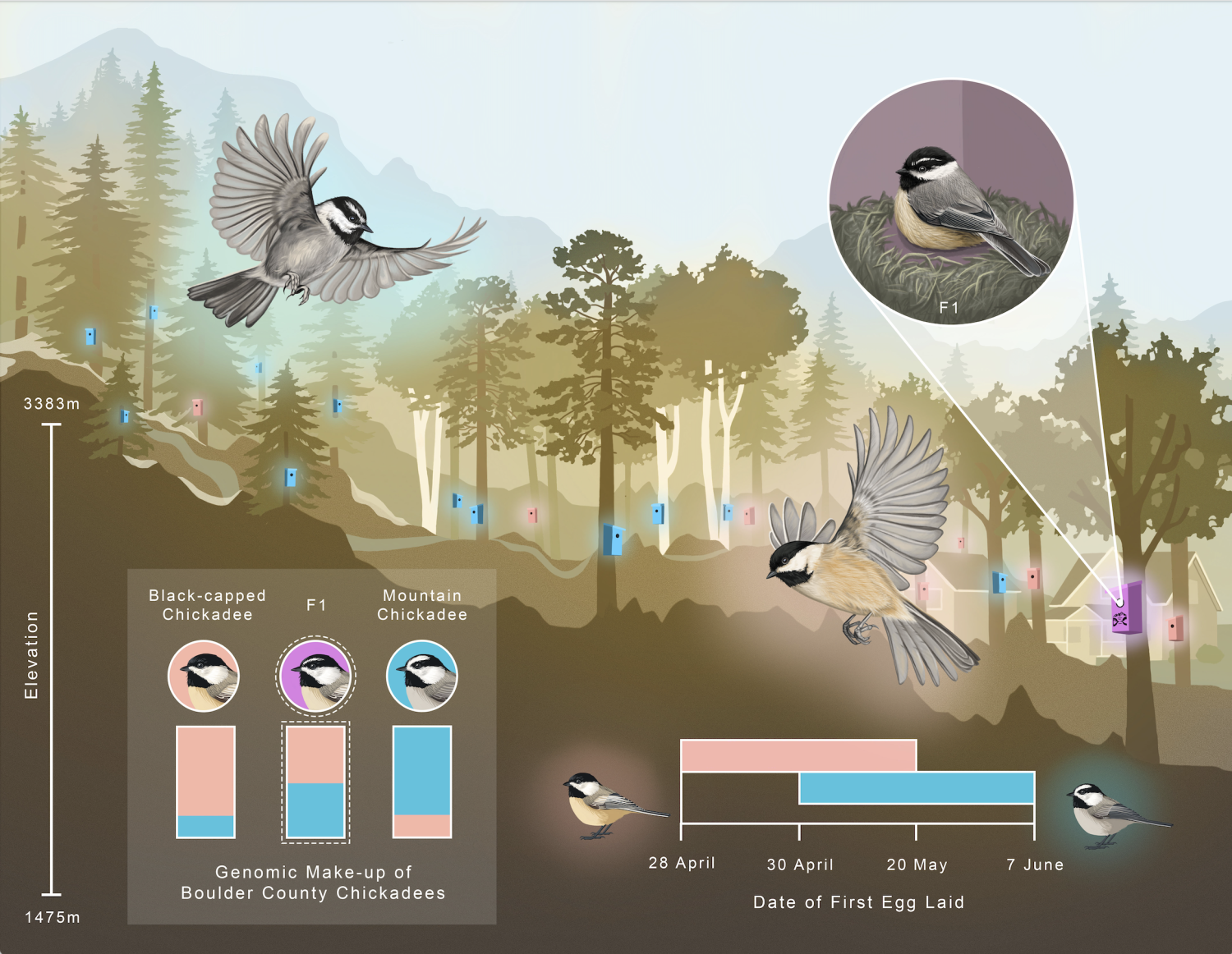Boulder Chickadee Study
What we study:

Black-capped and mountain chickadees are closely-related species that co-occur in Boulder County but occupy different habitats based on elevation. The Boulder Chickadee Study leverages an extensive network of nest boxes from Boulder up to the Mountain Research Station to examine how cities are changing interactions between these two species from both genomic and field-based perspectives. We pair field studies with cutting-edge genomic tools to understand interactions between these inquisitive & industrious birds.
We are broadly interested in understanding how human-modified spaces are impacting the interactions between these two species. We currently have the following on-going projects:
- Assessing the degree of geographic overlap and hybridization between the two species
- Quantifying nest parasites along mountain slopes
- Characterizing the feather patterning of the two species
- Characterizing song variation within and between species
- Characterizing nest temperature and composition variation within and between species

Publications
Taylor O, Grabenstein KC, Theodosopoulos AN, Leeson H, Taylor SA, Branch CL. Accepted. Chickadees sing different songs in sympatry versus allopatry. Journal of Evolutionary Biology.
Theodosopoulos AN, Grabenstein KC, Larrieu M, Arnold V, Taylor SA. Accepted. Similar parasite communities but dissimilar infection patterns in two closely related chickadee species. Ornithology.
Grabenstein KC, Burg T, Otter K, Taylor SA. Hybridization between closely related songbirds is related to human habitat disturbance. Global Change Biology. 29:955-968. https://doi.org/10.1111/gcb.16476
Grabenstein KC, Burg T, Otter K, Taylor SA. Sympatry leads to reduced body condition in chickadees that occasionally hybridize. Ecology and Evolution. Accepted.
Grabenstein KC, Taylor SA. 2018. Breaking Barriers: Causes, Consequences, and Experimental Utility of Human-Mediated Hybridization. Trends in Ecology and Evolution, 33(3), 198–212. doi.org/10.1016/J.TREE.2017.12.008
In the Press
"Boulder Chickadee Study explores hybrid trends" by Jeff Mitton
with Kathryn and Scott!


